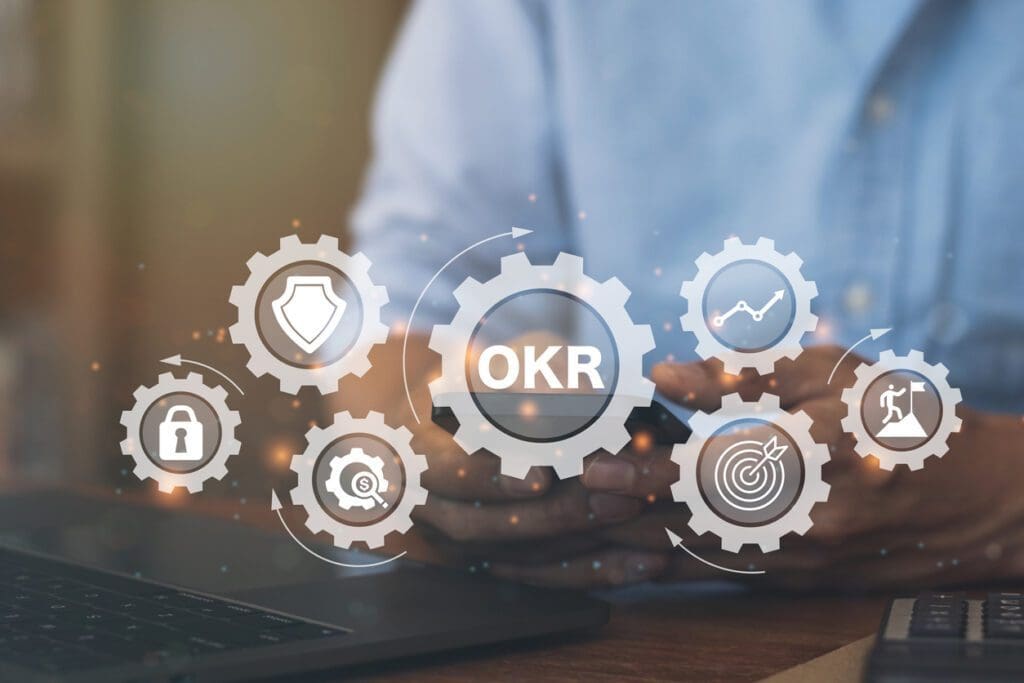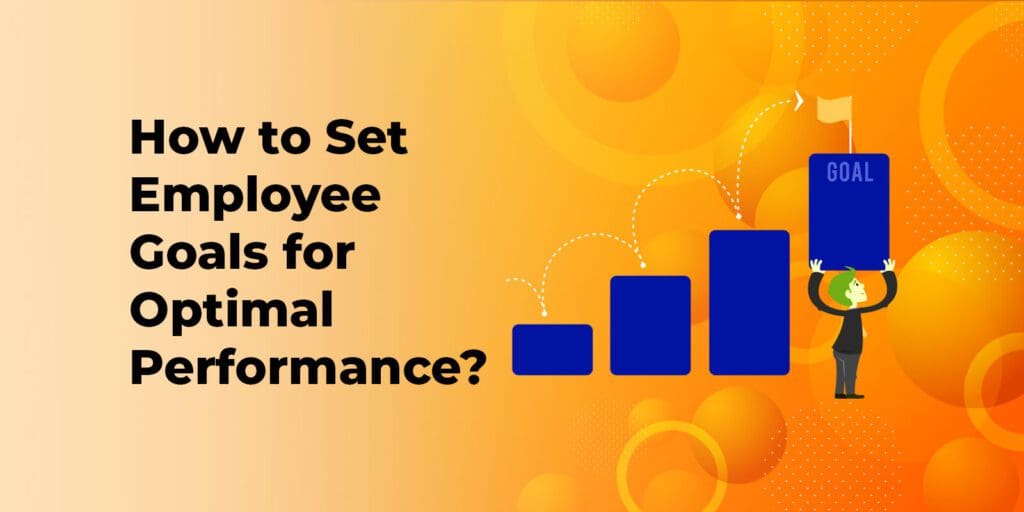Table of Contents
How to Set Employee Goals for Optimal Performance?
Setting employee goals is a critical aspect of any organisation’s success. Employees who have clear goals are more motivated, engaged, and productive. This guide will explore the benefits of setting employee goals, the different types of goals, and how to set specific, measurable, achievable, relevant, and time-bound (SMART) goals. We will also discuss performance management, employee engagement, and resources for setting employee goals.
Defining Goals
When setting employee goals, it is important to define them clearly. This means setting specific and measurable objectives. For example, instead of setting a goal to “improve customer service,” a more specific goal would be to “reduce customer complaints by 20% within the next six months.” By setting specific goals, employees clearly understand what is expected of them, and progress towards the goal can be measured.
Setting Employee Goals
When setting employee goals, involving team members in the process is important. This helps to ensure that goals are aligned with the team’s and the organisation’s overall objectives. Additionally, it promotes a sense of accountability and ownership. Professional development should also be considered when setting employee goals. Employees can develop new skills and improve their performance by providing opportunities for learning and growth.
Benefits of Setting Employee Goals
Setting clear employee goals can benefit both employees and the organisation. Employee engagement and motivation are more likely when they are motivated and clearly understand what is expected of them.
Goals can also increase productivity, improve communication, and improve job satisfaction. Employees can build self-confidence and a sense of accomplishment by setting and achieving goals. This can help to retain top talent and create a positive workplace culture.
Types of Goals
There are three types of goals: individual, team, and company objectives. Individual goals are specific to each employee and are designed to improve their performance in a particular area. Team goals are designed to improve the performance of a group of employees working together towards a common objective. Company objectives are broader in scope and designed to improve the organisation’s overall performance.
Short-term vs Long-term Goals for Employees
Setting short-term and long-term goals is crucial for providing employees direction, focus, and motivation. Short-term goals are specific, achievable, and time-bound targets that employees can accomplish within a few weeks or months. Long-term goals are broader, more challenging, and more strategic targets that employees can achieve within a year or more. Setting short-term and long-term goals helps employees prioritise tasks, allocate resources, and track progress. It also enables managers to evaluate performance, provide feedback, and adjust goals based on changing circumstances and priorities.
How to Set SMART Goals for Employees
Setting SMART goals is a widely used approach that helps organisations define specific, measurable, achievable, relevant, and time-bound targets.
The SMART framework provides a systematic and structured approach to goal setting that enhances clarity, focus, and alignment. A SMART goal is:
- Specific: Clearly defined, concise, and unambiguous
- Measurable: Quantifiable, with a defined metric or indicator of success
- Achievable: Realistic and feasible, given the employee’s skills, resources, and constraints
- Relevant: Aligned with the employee’s job role, responsibilities, and career aspirations, as well as the company’s objectives and values
- Time-bound: Has a specific deadline or timeframe for completion.
Using Objectives and Key Results (OKRs) to Set Employee Goals
Objectives and Key Results (OKRs) is a goal-setting framework that helps organisations align individual goals with company objectives and track progress. The OKR framework comprises two components: objectives and key results. Objectives are specific, measurable, achievable, relevant, and time-bound targets that align with company objectives. Key Results are quantifiable milestones or outcomes that indicate progress towards achieving the objectives. The OKR framework provides a transparent, collaborative, data-driven goal-setting approach that enhances performance, accountability, and engagement.


Incorporating Professional Development Goals into Employee Goal Setting
Incorporating professional development goals into employee goal setting is essential for enhancing employee skills, knowledge, and career development. Professional development goals relate to the skills, knowledge, or behaviours employees are expected to develop or improve.
These goals can be related to various aspects of work, such as technical skills, leadership skills, communication skills, or personal growth. Incorporating professional development goals into goal setting helps employees enhance their skills, improve their job performance, and prepare for career advancement.
Time-Bound Goals
Goals should also be time-bound, with specific deadlines for completion. This helps to ensure that employees remain focused and motivated and progress towards the goal can be measured. Time-bound goals can be short-term, such as completing a project within a specific timeframe, or long-term, such as achieving a particular career goal within the next five years.
Performance Review
Evaluating performance and achieving goals is an ongoing process. Regular performance reviews help ensure that employees are on track and progressing towards their goals. During performance reviews, managers should provide feedback on employee performance and help identify improvement areas. This helps keep employees motivated and engaged.
Employee Engagement
Any organisation’s success depends on its ability to engage its workforce. Employee engagement increases productivity, creativity, and commitment to the company’s objectives. Setting employee goals can increase engagement by giving employees a sense of purpose and direction. Giving employees the ability to provide feedback and the opportunity to recognise and reward their achievements is essential.
Performance Management
Performance management plays a critical role in setting and achieving employee goals. Managers should work closely with employees to set goals, provide feedback, and help identify improvement areas.
They should also provide opportunities for professional development and recognise and reward employee achievements. Organisations can effectively manage performance and ensure employees are motivated, engaged, and working towards a common goal.
Resources for Setting Employee Goals
There are many resources available for setting employee goals. Online courses and training programs can help develop goal-setting and performance-management skills. Numerous tools are also available, such as goal-setting software and performance management apps. By leveraging these resources, organisations can ensure employees have the skills and tools to set and achieve their goals.
Tips for Setting Employee Goals for Optimal Performance
Setting employee performance goals is an essential aspect of any successful business. It drives productivity and helps employees understand their responsibilities and the company’s expectations.
However, setting employee performance goals is more than a one-size-fits-all solution. Instead, it requires a tailored approach considering the employee’s skills, experience, and aspirations.


The first step in setting employee performance goals is to understand the appropriate goal for the employee. There are three types of goals: task-based, learning-based, and performance-based. Task-based goals are focused on completing specific tasks or projects.
Learning-based goals focus on increasing an employee’s knowledge or skills. Performance-based goals focus on improving an employee’s overall performance or achieving specific metrics.
To set effective employee performance goals, involving the employee in the process is essential. This can be achieved by conversing with the employee to discuss their career aspirations and identify areas where they can improve. The goals should be specific, measurable, achievable, relevant, and time-bound.
Monitoring progress regularly and providing feedback to the employee is also important. This helps the employee stay on track and provides an opportunity to adjust goals if necessary. It’s also crucial to acknowledge accomplishments and celebrate victories.
In conclusion, setting employee performance goals is critical to achieving optimal performance. Businesses can drive productivity and achieve success by tailoring the goals to the employee’s skills and aspirations, involving the employee in the process, setting specific and measurable goals, monitoring progress, and providing feedback.
Conclusion
Setting specific goals for employee performance is critical to the success of any organisation. By setting clear goals that are specific, measurable, achievable, relevant, and time-bound, organisations can improve productivity, communication, and job satisfaction.
It is also important to involve team members in the process, provide opportunities for professional development, and recognise and reward employee achievements. Organisations can effectively manage performance and ensure employees are motivated, engaged, and working towards a common goal.
Sign up for free to execute your goal-planning strategies starting today!



